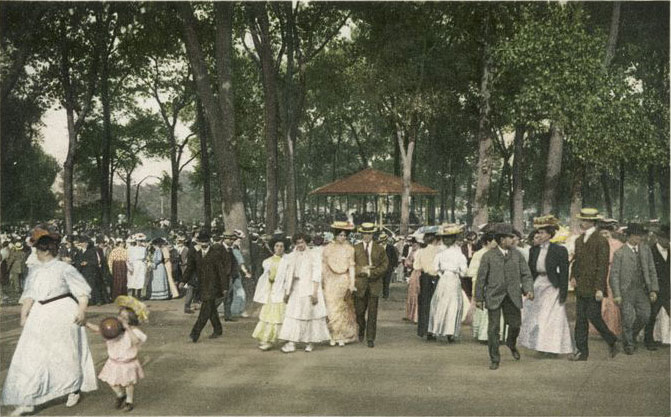|
National Herbal Park
The National Herbal Park () is a park located near the Naypyidaw-Taungnyo Road in Naypyidaw, Myanmar. Over 20,000 herbal and medicinal plants, representing over 700 species from the various states and divisions of Myanmar, are grown in the park. The herbal park is part of the government's efforts to protect and preserve the herbs from depletion and extinction and to keep alive the country's traditional system of medicines. It opened on 4 January 2008. There is no entry fee. See also * Naypyidaw Safari Park * Naypyidaw Water Fountain Garden * Naypyidaw Zoological Gardens The Naypyidaw Zoological Gardens () located in Naypyidaw is the largest zoo in South East Asia. Located on the Yangon-Mandalay highway about 250 miles (400 km) north of Yangon, the 612-acre (247-hectare) zoo opened on Myanmar's Armed Forces D ... References Parks in Myanmar Health in Myanmar Naypyidaw 2008 establishments in Myanmar {{Asia-protected-area-stub ... [...More Info...] [...Related Items...] OR: [Wikipedia] [Google] [Baidu] |
Urban Park
An urban park or metropolitan park, also known as a city park, municipal park (North America), public park, public open space, or municipal gardens (United Kingdom, UK), is a park or botanical garden in cities, densely populated suburbia and other municipal corporation, incorporated places that offers open space reserve, green space and places for recreation to residents and visitors. Urban parks are generally Landscape architecture, landscaped by design, instead of lands left in their natural state. The design, operation and maintenance, repair and operations, maintenance is usually done by government agencies, typically on the local government, local level, but may occasionally be contracted out to a park conservancy, "friends of" group, or private sector company. Depending on size, budget, and land features, which varies considerably among individual parks, common features include playgrounds, gardens, hiking, running, fitness trails or paths, bridle paths, sports fields and c ... [...More Info...] [...Related Items...] OR: [Wikipedia] [Google] [Baidu] |
Naypyidaw
Naypyidaw (), officially Romanization of Burmese, romanized as Nay Pyi Taw (NPT), is the capital city, capital and third-largest city of Myanmar. The city is located at the centre of the Naypyidaw Union Territory. It is unusual among Myanmar's cities in that it is an entirely Planned community, planned city outside of any Administrative divisions of Myanmar, state or region. The city, previously known only as Pyinmana District, officially replaced Yangon as the administrative capital of Myanmar on 6 November 2005; its official name was revealed to the public on Armed Forces Day (Myanmar), Armed Forces Day, 27 March 2006. As the seat of the government of Myanmar, Naypyidaw is the site of the Assembly of the Union, Union Parliament, the Supreme Court of Myanmar, Supreme Court, the Presidential Palace, Naypyidaw, Presidential Palace, the official residences of the Cabinet of Myanmar and the headquarters of government ministries and Tatmadaw, military. Naypyidaw is notable for its ... [...More Info...] [...Related Items...] OR: [Wikipedia] [Google] [Baidu] |
Burma
Myanmar, officially the Republic of the Union of Myanmar; and also referred to as Burma (the official English name until 1989), is a country in northwest Southeast Asia. It is the largest country by area in Mainland Southeast Asia and has a population of about 55 million. It is bordered by India and Bangladesh to its northwest, China to its northeast, Laos and Thailand to its east and southeast, and the Andaman Sea and the Bay of Bengal to its south and southwest. The country's capital city is Naypyidaw, and its largest city is Yangon (formerly Rangoon). Early civilisations in the area included the Tibeto-Burman-speaking Pyu city-states in Upper Myanmar and the Mon kingdoms in Lower Myanmar. In the 9th century, the Bamar people entered the upper Irrawaddy valley, and following the establishment of the Pagan Kingdom in the 1050s, the Burmese language and culture and Theravada Buddhism slowly became dominant in the country. The Pagan Kingdom fell to Mongol invas ... [...More Info...] [...Related Items...] OR: [Wikipedia] [Google] [Baidu] |
Herbalism
Herbal medicine (also called herbalism, phytomedicine or phytotherapy) is the study of pharmacognosy and the use of medicinal plants, which are a basis of traditional medicine. Scientific evidence for the effectiveness of many herbal treatments remains limited, prompting ongoing regulatory evaluation and research into their safety and efficacy. Standards for purity or dosage are generally not provided. The scope of herbal medicine sometimes includes fungi, fungal and bee products, as well as Dietary mineral, minerals, Exoskeleton, shells and certain animal parts. Paraherbalism is the Pseudoscience, pseudoscientific use of plant or animal extracts as medicine, relying on unproven beliefs about the safety and effectiveness of minimally processed natural substances. Herbal medicine has been used since at least the Paleolithic era, with written records from ancient Sumer, Egypt, Greece, China, and India documenting its development and application over millennia. Modern herbal medici ... [...More Info...] [...Related Items...] OR: [Wikipedia] [Google] [Baidu] |
Administrative Divisions Of Burma
Myanmar is divided into 21 administrative divisions, which include #Regions, States, and Union Territory, seven regions, #Regions, States, and Union Territory, seven states, Naypyidaw Union Territory, one union territory, Wa Self-Administered Division, one self-administered division, and self-administered zone, five self-administered zones. Table Following is the table of government subdivisions and its organizational structure based on different regions, states, the union territory, the self-administered division, and the self-administered zones: The regions were called divisions prior to August 2010, and four of them are named after their capital city, the exceptions being Sagaing Region, Ayeyarwady Region and Tanintharyi Region. The regions can be described as ethnically predominantly Bamar people, Burman (Bamar), while the states, the zones and Wa Division are dominated by ethnic minorities. Yangon Region has the largest population and is the most densely populated. ... [...More Info...] [...Related Items...] OR: [Wikipedia] [Google] [Baidu] |
Naypyidaw Safari Park
The Naypyidaw Safari Park () is a wildlife park, located in Naypyidaw, Myanmar (Burma). The park consists of an Asian safari, a Australian safari and a African safari. The Asian safari has over 100 rare wildlife animals including the domesticated wild oxen, sambur, and different kinds of deer. At the same time, the Australian one features various types of leopards and the African one various African deer, camels, goats, lions, tigers, rhinos, ostriches, giraffes, zebras and ponies. Visitors can see the wildlife by buggy. The construction of the park began in November 2010. See also * National Herbal Park * Naypyidaw Water Fountain Garden * Naypyidaw Zoological Gardens The Naypyidaw Zoological Gardens () located in Naypyidaw is the largest zoo in South East Asia. Located on the Yangon-Mandalay highway about 250 miles (400 km) north of Yangon, the 612-acre (247-hectare) zoo opened on Myanmar's Armed Forces D ... References {{coord missing, Myanmar Parks in Myanmar ... [...More Info...] [...Related Items...] OR: [Wikipedia] [Google] [Baidu] |
Naypyidaw Water Fountain Garden
The Naypyidaw Water Fountain Garden () is a garden in Naypyidaw, Myanmar Myanmar, officially the Republic of the Union of Myanmar; and also referred to as Burma (the official English name until 1989), is a country in northwest Southeast Asia. It is the largest country by area in Mainland Southeast Asia and has .... The garden is situated near the Naypyidaw City Hall with a steel structure arch-way. Also included in the garden are a main pond with three fountains and 11 small ponds with 13 different fountains, a high clock tower, nine recreation centres, two small gardens, two stone gardens and ten feet wide buggy road and footpaths. The garden was set up near the Naypyidaw-Taungnyo Road. See also * National Herbal Park * Naypyidaw Safari Park * Naypyidaw Zoological Gardens References * The New Light of Myanmar Volume XV, Number 265 published in Sunday 6 January 2008 Parks in Myanmar Health in Myanmar 2008 establishments in Myanmar Naypyidaw {{Mandal ... [...More Info...] [...Related Items...] OR: [Wikipedia] [Google] [Baidu] |
Naypyidaw Zoological Gardens
The Naypyidaw Zoological Gardens () located in Naypyidaw is the largest zoo in South East Asia. Located on the Yangon-Mandalay highway about 250 miles (400 km) north of Yangon, the 612-acre (247-hectare) zoo opened on Myanmar's Armed Forces Day (27 March) in 2008 with about 420 animals transferred from the Yangon Zoological Gardens. The zoo has elephants, crocodiles, tigers, deer, leopards, monkeys as well as white tigers, a hippopotamus, zebras and kangaroos. It also comes has an air-conditioned penguin house. In December 2009, the zoo had 634 animals of 89 species, including 304 from 34 different mammal species; 265 from 44 bird species; and 65 from 11 reptile species. See also * National Herbal Park * Naypyidaw Safari Park * Naypyidaw Water Fountain Garden The Naypyidaw Water Fountain Garden () is a garden in Naypyidaw, Myanmar Myanmar, officially the Republic of the Union of Myanmar; and also referred to as Burma (the official English name until 1989), ... [...More Info...] [...Related Items...] OR: [Wikipedia] [Google] [Baidu] |
Parks In Myanmar
A park is an area of natural, semi-natural or planted space set aside for human enjoyment and recreation or for the protection of wildlife or natural habitats. Urban parks are green spaces set aside for recreation inside towns and cities. National parks and country parks are green spaces used for recreation in the countryside. State parks and provincial parks are administered by sub-national government states and agencies. Parks may consist of grassy areas, rocks, soil and trees, but may also contain buildings and other artifacts such as monuments, fountains or playground structures. Many parks have fields for playing sports such as baseball and football, and paved areas for games such as basketball. Many parks have trails for walking, biking and other activities. Some parks are built adjacent to bodies of water or watercourses and may comprise a beach or boat dock area. Urban parks often have benches for sitting and may contain picnic tables and barbecue grills. The largest ... [...More Info...] [...Related Items...] OR: [Wikipedia] [Google] [Baidu] |
Health In Myanmar
Health has a variety of definitions, which have been used for different purposes over time. In general, it refers to physical and emotional well-being, especially that associated with normal functioning of the human body, absent of disease, pain (including mental pain), or injury. Health can be promoted by encouraging healthful activities, such as regular physical exercise and adequate sleep, and by reducing or avoiding unhealthful activities or situations, such as smoking or excessive stress. Some factors affecting health are due to individual choices, such as whether to engage in a high-risk behavior, while others are due to structural causes, such as whether the society is arranged in a way that makes it easier or harder for people to get necessary healthcare services. Still, other factors are beyond both individual and group choices, such as genetic disorders. History The meaning of health has evolved over time. In keeping with the biomedical perspective, early definit ... [...More Info...] [...Related Items...] OR: [Wikipedia] [Google] [Baidu] |



